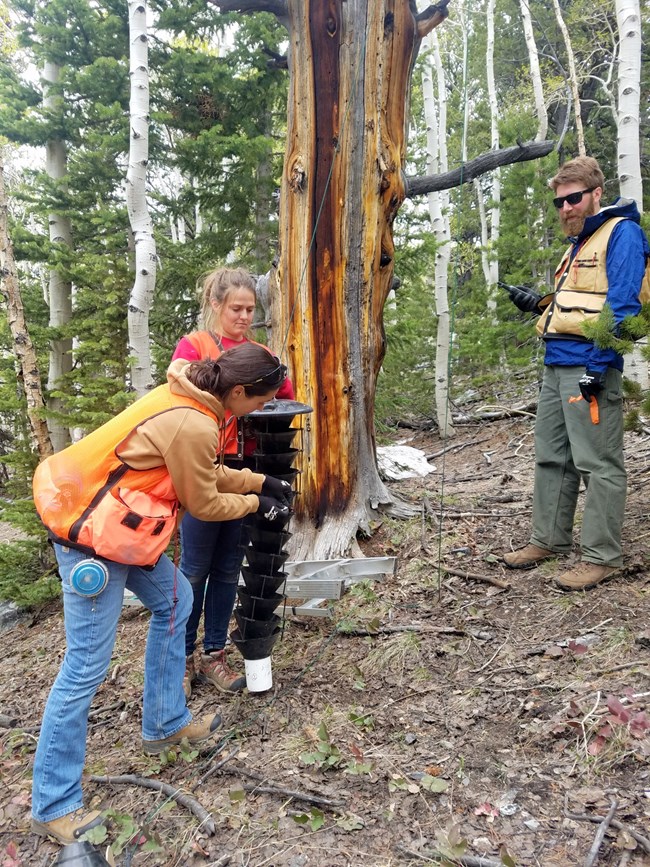Part of a series of articles titled The Midden - Great Basin National Park: Vol. 23, No. 2, Winter 2023.
Article
Mountain Pine Beetles Camping out near Wheeler Peak
This article was originally published in The Midden – Great Basin National Park: Vol. 23, No. 2, Winter 2023.

NPS photo
The mountain pine beetle (Dendroctonus ponderosae Hopkins) is a familiar foe at Great Basin National Park, causing mortality in high elevation pine species like limber pine (Pinus flexilis E. James). Over the years, Wheeler Peak campground has lost many limber pines to mountain pine beetle. To protect susceptible limber pines within the campground, Great Basin National Park and the U.S. Forest Service, Forest Health Protection, have been using synthetic pheromone products to disrupt mountain pine beetle activity and prevent them from attacking high value trees.
Mountain pine beetles communicate through natural production of pheromones. One pheromone, verbenone, is produced through several sources when mountain pine beetles attack host trees. As verbenone concentrations increase it signals to other mountain pine beetles that the tree is no longer suitable habitat, or in other words, this tree is full, go somewhere else. Application of synthetic verbenone to host trees effectively reduces attacks from mountain pine beetles by creating this signal. One key for successful pheromone use is proper timing of application. Knowing when mountain pine beetle populations are most active is critical. Although plenty of information on mountain pine beetle emergence and flight period are available, slight timing differences can exist at high-elevation sites like Wheeler Peak Campground.
In the summers of 2019 and 2020, Forest Health Protection, in partnership with the Park, conducted a trapping project to determine when mountain pine beetle was most active and likely to attack limber pine host trees in the vicinity of Wheeler Peak Campground. The results showed that peak mountain pine beetle flight occurred mid-August, although adults were captured from late-June through October. Additionally, over 95% of mountain pine beetles were captured when maximum daily temperatures in a collection period (about every two weeks) exceed 70°F (21°C).
The knowledge gained from this project will allow U.S. Forest Service entomologists and Great Basin National Park staff to appropriately time future pheromone applications for the greatest efficacy and protection of limber pines within Wheeler Peak Campground.
To read more, check out the full article in Western North American Naturalist.
Last updated: December 5, 2023
